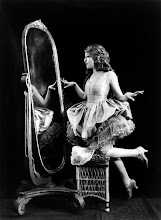 On the screen today is another Alfred Hitchcock and Jimmy Stewart collaboration. Rear Window is perhaps one of Hitchcock's most celebrated, best made, and most thematically rich films. It begins with a wide sweeping view of the daily activities of all of the neighbors in a small apartment complex during a sweltering summer in the city. This is a movie that needs to be watched in widescreen for certain since, especially since it is a Hitchcock film, the small details are very important.
On the screen today is another Alfred Hitchcock and Jimmy Stewart collaboration. Rear Window is perhaps one of Hitchcock's most celebrated, best made, and most thematically rich films. It begins with a wide sweeping view of the daily activities of all of the neighbors in a small apartment complex during a sweltering summer in the city. This is a movie that needs to be watched in widescreen for certain since, especially since it is a Hitchcock film, the small details are very important.Jimmy Stewart plays L.B. Jeffries, a world traveling photographer who lives an exciting life but is forced to stay cooped up in his apartment for seven weeks after his leg is broken. Instead of getting to continue with his globe trekking activities, Jeffries has grown bored watching the antics of his neighbors out of his window. His only visitors are his lovely, fashionable girlfriend Lisa Carol Freemont, played by the beautiful Grace Kelly, and his personal therapist
 and nurse Stella, played by the funny the smart, sassy Thelma Ritter. At first, the act of spying on his fellow residents is harmless, perhaps a little creepy. The audience sees all of the neighbors through Jeffries' eyes, as if for the first time since Jeffries seems to be rarely in his home. Through watching this small neighborhood and all of the eccentricity and ordinary life that takes place in it, the audience becomes more and more attached to the people in it, all of whom have descriptive pseudonyms created by Jeffries. Everything in this small slice of Americana seems to be going perfectly and Jeffries seems to think nothing ever happens in his little neighborhood. Then things start to become more tense when Jeffires sees something that startles him when spying on his neighbors and begins to suspect that one of his neighbors has committed a murder. Jeffries must continue his spying and use some quick thinking to prove that his suspicions are correct.
and nurse Stella, played by the funny the smart, sassy Thelma Ritter. At first, the act of spying on his fellow residents is harmless, perhaps a little creepy. The audience sees all of the neighbors through Jeffries' eyes, as if for the first time since Jeffries seems to be rarely in his home. Through watching this small neighborhood and all of the eccentricity and ordinary life that takes place in it, the audience becomes more and more attached to the people in it, all of whom have descriptive pseudonyms created by Jeffries. Everything in this small slice of Americana seems to be going perfectly and Jeffries seems to think nothing ever happens in his little neighborhood. Then things start to become more tense when Jeffires sees something that startles him when spying on his neighbors and begins to suspect that one of his neighbors has committed a murder. Jeffries must continue his spying and use some quick thinking to prove that his suspicions are correct.Perhaps the most intense moments ever in a Hitchcock film come in the final twenty minutes of this one when all of the ends of the movie are slowly tied back together. The film was nominated for four Oscars but tragically won none of them. Music plays a major role in the creation of suspense in this film and the activities of the composer living in a studio apartment near Jeffries also helps propel the plot as well as create music in the neighborhood. Though the dialogue is chiefly among Stewart, Kelly, and Ritter, the acting is supberb among not only the three main characters but all of the supporting cast playing the neighbors. Gestures, actions, and music play major roles in making this film so wonderful.
 Themes are very prominent in this movie. The idea of photography, cameras, windows, reflections, and sight are interwoven throughout the film on so many levels. Because he is confined to his wheelchair, Jeffries is forced to be only an observer of what is around him and it makes him take a closer look at his surroundings, a dark closer look. I could do an entire blog on different analyses of Rear Window and I'm sure that if you look, there is one out there. Rich in symbolism, theme, and suspense, Rear Window works on so many levels and there is definitely something for everyone to get out of it.
Themes are very prominent in this movie. The idea of photography, cameras, windows, reflections, and sight are interwoven throughout the film on so many levels. Because he is confined to his wheelchair, Jeffries is forced to be only an observer of what is around him and it makes him take a closer look at his surroundings, a dark closer look. I could do an entire blog on different analyses of Rear Window and I'm sure that if you look, there is one out there. Rich in symbolism, theme, and suspense, Rear Window works on so many levels and there is definitely something for everyone to get out of it.





No comments:
Post a Comment